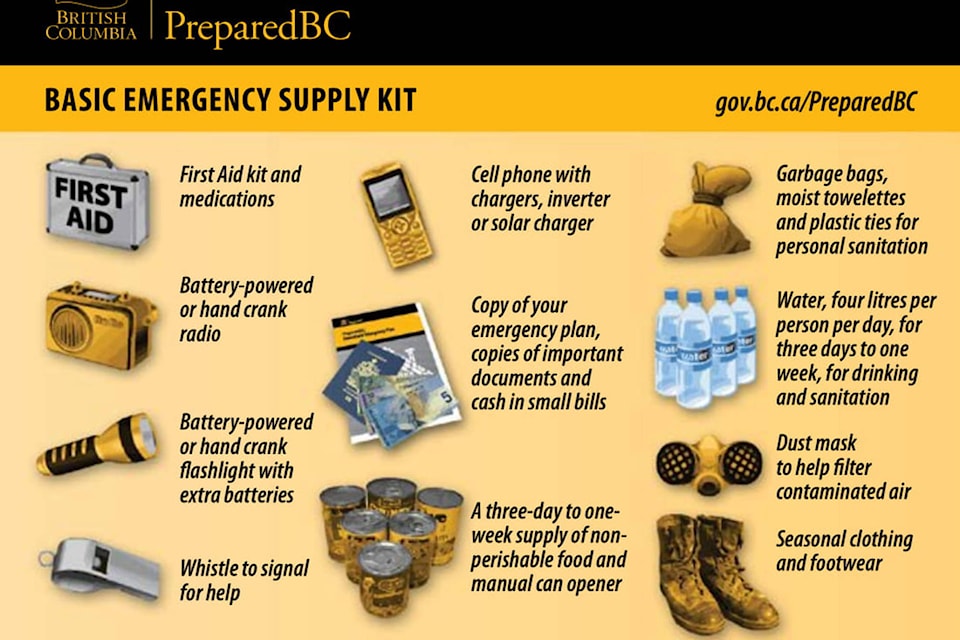With the heatwave we now find ourselves in, I’ve been pondering my lack of wildfire preparedness.
Maybe it’s common for people not to want to consider life’s worst-case scenarios, let alone prepare for them, but as I creep up in age, I do feel a growing sense of urgency towards such things.
And, as the mercury climbs up to 41 C – hotter than it ever got in August 1998 in Salmon Arm when a wildfire forced people to evacuate their homes – the idea of being prepared is starting to make sense.
Not having an expertly crafted evacuation guide in front of me, I thought I’d come up with my own to start (just for me as my family is away), and then see how they compare.
People often say the first thing they would grab in the case of a fire are pets and pictures. OK. Pet carrier: check. Back up drive with photos: check. Guess I’ll need cat food too. And a cat dish. And a bottle of water. Probably want to pack a small amount of clothing. Maybe some toiletries: toothpaste, toothbrush, toilet paper, etc. Cell phone and charger. Camera and charger (for work and because). Maybe a game, like a deck of Uno cards, to kill the time. And maybe some granola bars.
Done and done.
Read more: Shuswap Lake being monitored for algal blooms
Read more: Salmon Arm Fair organizers plan for return with cautious optimism
Alright, let’s see what the experts advise: Face masks. (OK, missed that.) Glasses. (Yeah, those would help.) Three days worth of non-perishable food and three gallons of water per person. (Holy cow, do I even have that in the pantry?) Prescriptions and medications. (Oops.) Flashlight. (Does the light on the cell phone count?) Copies of important documents, birth certificates, etc. (Oops again.) A map. (See cell phone.) There’s a variety of other things I didn’t consider, not just regarding what to take, but also what to do. For example, a checklist created for the Salt Spring Island Emergency program advises keeping your vehicle’s gas tank at least half full throughout a fire season. When evacuating, turn off all pilot lights and shut off propane or gas tanks.
There are various wildfire evacuation resources online which offer a lot of little things to consider – little things that can quickly add up and overwhelm when you’re trying to get out the door asap.
I’m sure there are other more entertaining things I could do than pack a box of food and a bag of clothes which, in all likelihood, will just gather dust. But I guess it’s preferable to be prepared now and less panicked later.
lachlan@saobserver.net
Like us on Facebook and follow us on Twitter
